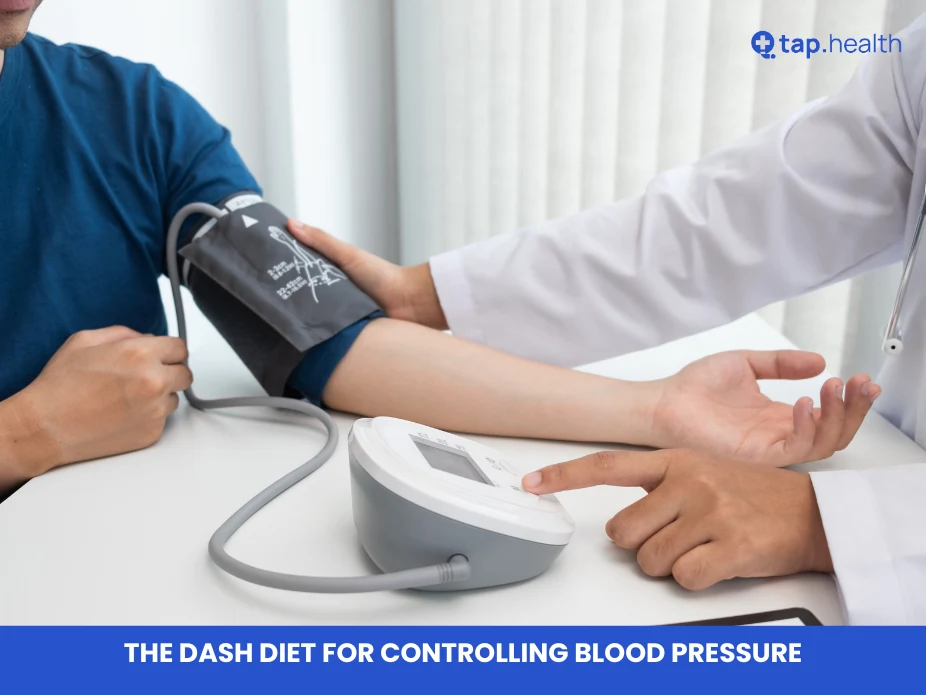The DASH diet, or Dietary Approaches to Stop Hypertension, emerges as a proven strategy for hypertension management. Developed by the National Institutes of Health in the 1990s, this eating plan targets high blood pressure through nutrient-dense foods. It prioritizes potassium, calcium, and magnesium while curbing sodium intake. Unlike restrictive fad diets, DASH promotes sustainable habits with whole foods, making it ideal for long-term blood pressure reduction and overall wellness.
What Exactly Is the DASH Diet and Its Origins?
DASH stands for Dietary Approaches to Stop Hypertension, a science-backed plan to combat high blood pressure. Originating from NIH research, it emphasizes fruits, vegetables, whole grains, and lean proteins. This balanced approach avoids extreme calorie cuts or food group eliminations. Instead, it focuses on hypertension-friendly nutrients like potassium-rich foods such as bananas and spinach, calcium sources from low-fat dairy, and magnesium from legumes. By limiting processed items and sugars, DASH supports natural blood pressure regulation without relying solely on medication.
How DASH Diet Lowers Blood Pressure Effectively
The DASH diet controls blood pressure by balancing key minerals that relax blood vessels and manage fluid retention. Potassium counteracts sodium’s harmful effects, found in potatoes and leafy greens. Calcium aids vessel contraction and relaxation, sourced from yogurt and fortified plant milks. Magnesium promotes circulation via smooth muscle support in nuts and whole grains.
A core element is sodium reduction—capping at 2,300 mg daily, or ideally 1,500 mg for aggressive hypertension control. This low-sodium diet prevents water retention, a common blood pressure culprit in typical high-salt diets. Studies show DASH can drop systolic pressure by 8–14 mmHg in weeks, rivaling some medications.
Key Components of DASH Diet Meal Plan
Build your DASH diet meal plan around these pillars for optimal hypertension management:
- Fruits and Vegetables: Target 4–5 servings each daily. These provide fiber, vitamins, and potassium-rich options like oranges and broccoli for vibrant, low-calorie plates.
- Whole Grains: Consume 6–8 servings of oats, quinoa, or brown rice. They deliver magnesium and sustained energy.
- Lean Proteins: Limit to 2 servings of fish, poultry, or plant-based like beans and tofu. Avoid red meats for heart-healthy choices.
- Low-Fat Dairy: 2–3 servings of skim milk or Greek yogurt supply calcium without excess fats.
- Nuts, Seeds, Legumes: 4–5 weekly servings offer healthy fats and magnesium—think almonds or lentils as snacks.
- Sodium Limits: Stick to low-sodium meals, swapping salt for herbs in cooking.
- Healthy Fats: Incorporate olive oil, avocados, and salmon over saturated sources.
This flexible structure adapts to various calorie needs, ensuring adherence for blood pressure benefits.
Real Success Stories with DASH Diet for Hypertension
Sarah, 45, faced hypertension at 145/92 mmHg and medication side effects. Adopting DASH, she incorporated potassium-rich foods and low-sodium meals. In six months, her readings hit 120/78 mmHg, with 10 pounds lost and boosted energy. “Gradual shifts in fruits and veggies made it sustainable,” she shared.
Tom, 60, battled high blood pressure for years. He replaced salty snacks with nuts and flavored with spices. Results? Significant drops in pressure and cholesterol. His doctor noted improved heart health from consistent whole grain and lean protein intake.
These cases highlight DASH’s real-world impact on hypertension management through practical, nutrient-focused changes.
Expert Insights on DASH Diet Benefits
The American Heart Association endorses DASH for its rapid blood pressure reduction. Nutritionist Dr. Lisa Young explains: “DASH’s emphasis on portion control and unprocessed foods aids weight management, a vital hypertension factor.” Research confirms benefits beyond blood pressure, including cholesterol control and heart disease prevention.
DASH Diet FAQ: Answers to Common Queries
Q: Does DASH help conditions like high cholesterol or heart disease?
A: Absolutely. Its fiber-rich, low-saturated fat focus lowers cholesterol and supports cardiovascular health.
Q: Is following a low-sodium DASH plan challenging?
A: No—start small, like adding veggies or cutting processed foods. It’s about balanced, enjoyable eating.
Q: Can I include treats in DASH diet recipes?
A: Yes, in moderation. Balance with nutrient-dense choices for sustainability.
Q: How quickly do DASH diet benefits appear for blood pressure?
A: Often within 2–3 weeks, varying by adherence and health status.
Q: Is DASH suitable for diabetes and blood pressure control?
A: Yes, its whole grains and fruits stabilize blood sugar. Consult a doctor for personalization.
Tips for Implementing DASH Diet Successfully
Adopt gradual changes: Swap one processed item for a fruit daily. Prioritize whole foods shopping. Hydrate well and pair with exercise for amplified effects. Track sodium via labels. Experiment with DASH diet recipes like veggie stir-fries or quinoa salads. Consistency yields lasting hypertension management.
How Can TapHealth Help Manage Diabetes?
TapHealth offers tailored tools for diabetes monitoring, integrating diet tracking with DASH principles for dual blood pressure and sugar control.
References:
- National Institutes of Health (NIH). (2018). The DASH Eating Plan. NIH.gov



